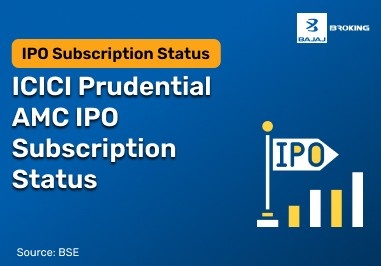Call writing options can be a profitable strategy when the writer anticipates that the underlying stock’s price will remain below the strike price or exhibit only modest growth. If the underlying stock price continues below the strike price until the option expires, the writer keeps the premium as profit and does not have to deliver the underlying shares. There are hazards, however, because the writer may be obliged to sell the stock at a possibly lower price if its value exceeds the strike price. This approach is not for risk-averse investors since it needs a deep grasp of options trading as well as cautious risk management to limit possible losses. Before investing in this technique, investors must be informed of the possible risks and benefits connected with writing call options.
Key points about writing call options
Before diving into specific examples or strategies, you need to understand the essentials of writing a call option. Each of these points gives you clarity on how the mechanism works.
- You receive a premium upfront
When you write a call, the buyer pays you a premium. This payment compensates you for the risk you take by being obligated to sell the asset at the strike price, if required.
- You have an obligation, not a choice
As a writer, you cannot decline the contract if exercised. If the buyer exercises the call, you must deliver the underlying asset at the strike price, regardless of the current market value.
- Your risk depends on whether it is covered or naked
If you own the underlying asset (covered call), your potential loss is limited. If you do not own the asset (naked call), your potential loss is unlimited if the asset price rises significantly.
- Profit is limited to the premium received
Your maximum profit from writing a call is the premium collected. If the option expires worthless, you keep the full premium as profit, assuming no execution or delivery obligations.
Writing Call Options Example
To understand how writing call options works in practice, you can look at two common situations: the covered call and the naked call. These examples will help you see how risk, reward, and market outlook all play a role in each strategy.
1. Covered call example
Suppose you own 100 shares of Company A, each priced at ₹500. You write a call option with a strike price of ₹520 and receive a premium of ₹10 per share. If the price stays below ₹520, the option will expire worthless, and you retain the premium. If the price rises above ₹520, you must deliver your shares at the strike price, still keeping the ₹10 premium, although you miss out on additional upside.
2. Naked call example
Imagine you do not own Company B’s shares but still write a call with a strike price of ₹700 and earn a ₹15 premium. If the share price rises to ₹750, you must buy the stock from the market and sell it to the option holder at ₹700. This results in a ₹35 loss per share, partially offset by the ₹15 premium you collected earlier.
Writing Call Option Strategies
When you write call options, you have two primary approaches: covered calls and naked calls. Each has its own purpose, use case, and risk profile. You must carefully align the strategy with your own understanding of market behaviour and risk tolerance.
1. Writing covered calls
This strategy involves writing a call option on an asset you already own. It is commonly used to generate extra income from shares lying in your portfolio. If the asset price remains below the strike price, the option expires, and you keep the premium.
- You retain ownership of the asset
In a covered call, you continue to hold the shares while writing the option. This gives you control over the asset even after expiry.
- The strategy is limited-risk
Your maximum loss is restricted to any drop in the asset’s value, while your profit is limited to the premium and potential gains up to the strike price.
- It may suit stable or sideways markets
Covered calls are used when you expect the price of the stock to stay flat or grow slightly. You earn income through the premium even if the price does not move much.
- You limit your upside potential
If the share price rises significantly above the strike price, you will miss the additional profit since you are obligated to deliver it at the lower price.
2. Writing naked calls
This strategy involves writing a call option without holding the underlying asset. It can expose you to considerable risk if the market moves against your expectations.
- You do not own the underlying asset
Since you are not holding the shares, you will need to purchase them from the open market if the buyer exercises the option, potentially at a much higher price.
- The risk can be theoretically unlimited
If the stock price rises sharply, your losses can increase without limit, as there is no cap on how high a stock price can go.
- You earn only the premium
Regardless of how far the stock falls or stays below the strike price, your maximum gain remains limited to the premium you received at the time of writing the option.
- It requires active monitoring and margin
Naked call positions typically require you to maintain margin with your broker and closely track market movements to avoid large losses.
Who should invest in writing call options?
Call writing is a strategy that may be suitable for certain types of investors, but it’s not suitable for everyone. Those who should consider investing in call writing typically are experienced traders. Investing in call writing means having a more advanced understanding of the stock market and options trading. Here are some characteristics of investors who might consider this strategy:
- Experienced Investors: call writing options are best suited for experienced investors who have a good grasp of options and a well-rounded knowledge of the stock market. Novice investors should start with more straightforward strategies.
- Neutral to Bearish Outlook: Investors who have a neutral or mildly bearish outlook on a particular stock or the overall market may find writing call options appealing. This strategy can generate income in such scenarios.
- Risk-Tolerant: call writing involves a level of risk, as the writer may be obligated to sell the underlying stock if the option is exercised. Investors should be comfortable with this risk and have a risk management plan in place.
- Income Generation: Investors seeking income may consider call writing as it allows them to collect premiums. This strategy can be used to supplement existing income streams.
- Portfolio Hedging: Some investors use call writing as a hedging strategy to protect their stock holdings from potential downside risk. It can provide a form of insurance against declining stock prices.
- Long-Term Investors: Long-term investors who are willing to hold their stocks for an extended period may find writing covered calls (a specific form of call writing) beneficial. It can enhance the overall return on their investments.
It’s crucial to remember that options trading, including call writing, can be complex and carry inherent risks. Investors should carefully assess their risk tolerance, financial goals, and knowledge before engaging in this strategy. Additionally, it’s advisable to consult with a financial advisor or professional to ensure that it aligns with their overall investment strategy.
Advantages And Disadvantages Of Investing In Writing Call Options
Investing in writing call options, like any financial strategy, has its advantages and disadvantages. It’s essential to understand both the potential benefits and risks before considering this strategy:
Advantages:
- Income Generation: Call writing allows investors to earn premiums, providing a source of income. This can be especially attractive in a low-yield market.
- Enhanced Returns: When used in combination with a long stock position (covered calls), call writing can enhance overall portfolio returns. It provides an opportunity to profit from both the stock’s price appreciation and the option premium.
- Portfolio Hedging: Writing covered calls can act as a form of portfolio insurance. If the stock price declines, the option premium can help offset some of the losses.
- Profit in Neutral or Bearish Markets: This strategy can be profitable in markets where the investor expects little to no upward movement or even a slight decline in the stock’s price.
Disadvantages:
- Limited Profit Potential: The income from call writing is capped at the premium received. If the stock price rises significantly, the writer may miss out on potential gains.
- Obligation to Sell: As a call option writer, you are obligated to sell the underlying stock if the option is exercised. This can result in missed opportunities if the stock’s price rises sharply.
- Unlimited Losses: While the income is limited, the potential losses are theoretically unlimited if the stock’s price increases substantially. This risk can be significant, especially for naked call options.
- Risk of Assignment: The writer can be assigned at any time before or on the option’s expiration date, leaving the investor with little control over when they might need to sell the stock.
- Complexity: Options trading can be complex, and mismanagement or misunderstanding of the strategy can lead to significant losses.
- Margin Requirements: In some cases, call writing may require the use of a margin, which can amplify both potential gains and losses.
Call writing can be a useful strategy for income generation and risk management in the right circumstances. However, it’s not without its risks, and investors should carefully assess their financial goals, risk tolerance, and market outlook before incorporating this strategy into their investment portfolio. Moreover, it’s advisable to seek guidance from a financial advisor or professional to ensure it aligns with their overall investment plan.
Conclusion
In conclusion, call writing is a strategy that offers both potential rewards and risks in the realm of options trading. This approach can be advantageous for experienced investors seeking income generation or looking to enhance their returns while holding specific stocks. It also serves as a form of portfolio insurance, providing protection in bearish or neutral market conditions. However, it comes with its set of limitations and hazards, including limited profit potential, the obligation to sell the underlying stock, potential unlimited losses, and the risk of early assignment.
The complexity of options trading necessitates a deep understanding and careful risk management. Those considering writing call options should carefully evaluate their financial objectives, risk tolerance, and market outlook, and they may benefit from seeking guidance from a financial advisor. Ultimately, this strategy can be a valuable tool in the investor’s toolkit when used judiciously and in alignment with one’s overall investment goals and risk tolerance.
Additional Read: What is Call and Put in Trading
Disclaimer: Investments in the securities market are subject to market risk, read all related documents carefully before investing.
This content is for educational purposes only.














